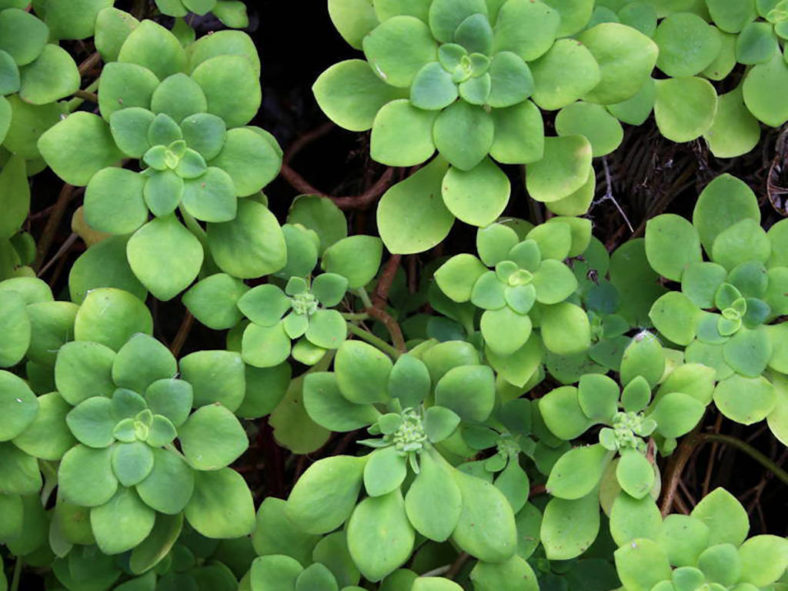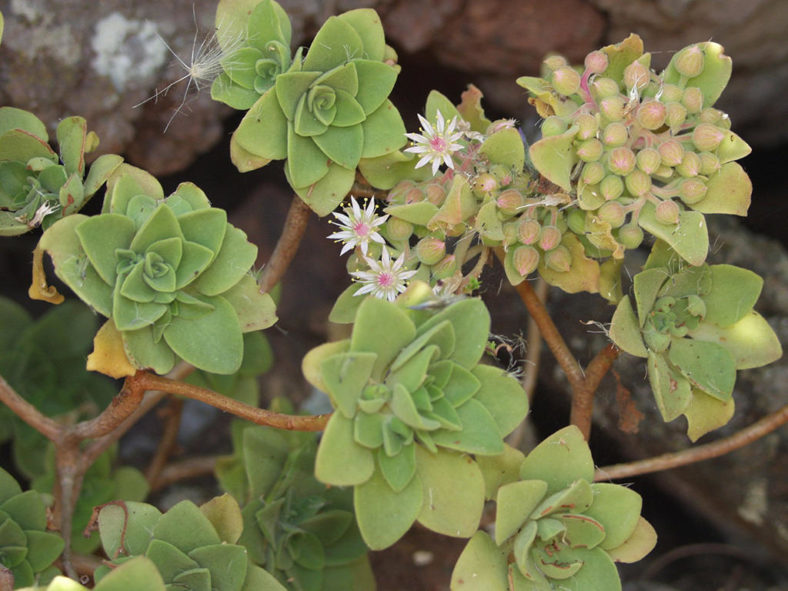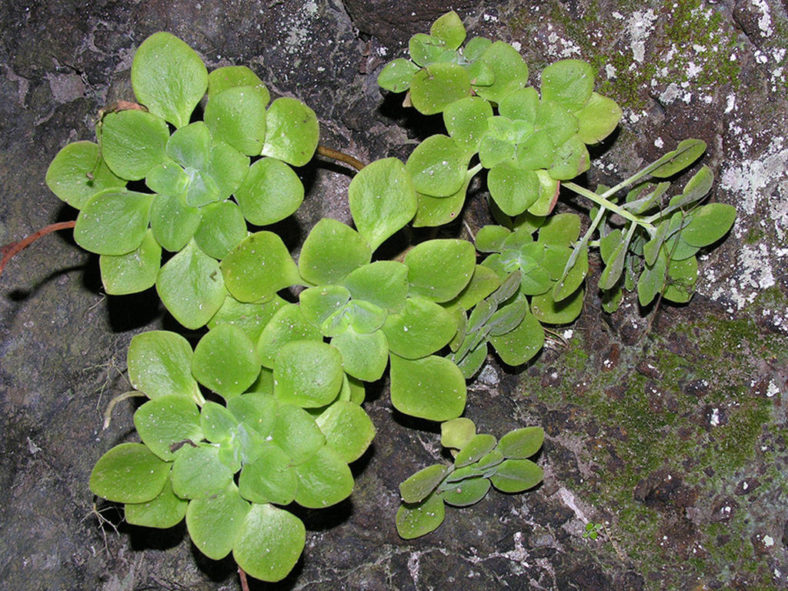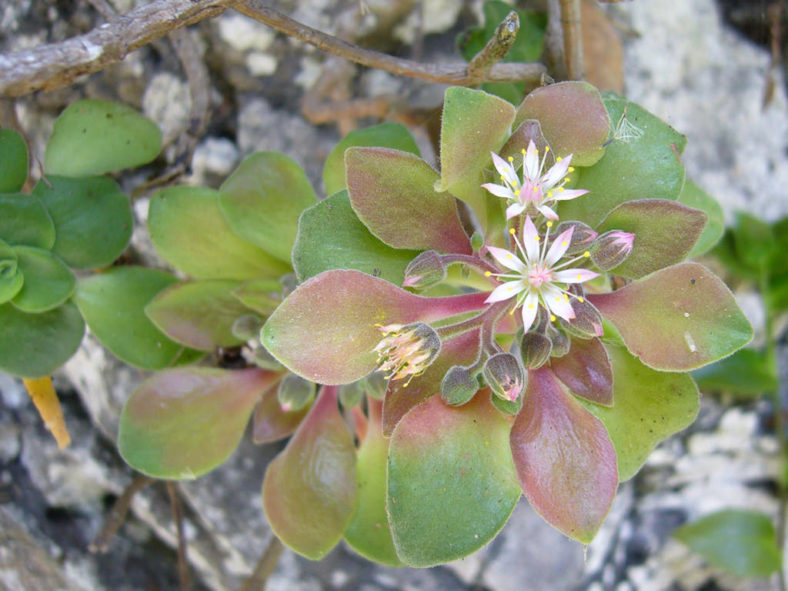Scientific Name
Aeonium goochiae Webb & Berthel.
Synonym(s)
Aldasorea goochiae, Sempervivum goochiae, Sempervivum tortuosum var. goochiae
Scientific Classification
Family: Crassulaceae
Subfamily: Sempervivoideae
Tribe: Aeonieae
Genus: Aeonium
Etymology
The specific epithet "goochiae" (pronounced "GEW-chee-ay") honors Mrs. Gooch, the maiden name of the mother of Philip Barker Webb (1793-1854), an English botanist and collector of plants throughout Mediterranean Europe, Madeira, and the Canary Islands.
Origin
Aeonium goochiae is native to the Canary Islands. It grows on cliff faces and rocky outcrops in the northern parts of La Palma island at elevations from 330 to 2,300 feet (100 to 700 m).
Description
Aeonium goochiae is a small, densely branched succulent shrub that forms flattish rosettes of pale green to yellowish green, sometimes reddish leaves at the end of the branches. It can grow up to 16 inches (40 cm) tall, while the rosettes can reach a diameter of 4.8 inches (12 cm). The leaves are thick, fleshy, and covered with short, soft hairs. They are elliptic or circular, apically rounded or acute, and can measure up to 2 inches (5 cm) in length and 1 inch (2.5 cm) in width.
The flowers are star-shaped, 7- to 8-merous, and can reach up to 0.6 inches (1.5 cm) in diameter. They are very pale yellow or whitish, with the median part often pinkish, and appear in loose, branching, flat-topped clusters in mid-spring.
Hybrids of Aeonium goochiae

Hardiness
USDA hardiness zones 10a to 11b: from 30°F (-1.1°C) to 50°F (10°C).
How to Grow and Care
Aeoniums do not like hot or dry weather. Therefore, they may go dormant in summer and do not require any water except in arid conditions. In extreme heat, their leaves will curl to prevent excessive water loss. Growing them in moist shade will keep them healthy, but their true growth season is from winter to spring, when temperatures are cool, ranging from 65°F to 75°F (18°C to 24°C), and the air is damp. In the winter, water whenever the soil has dried out. Test by poking your finger down into the soil an inch or 2 (2.5 to 5 cm). Too much moisture or allowing them to sit in wet soil will cause root rot.
A sandy loam or regular potting mix is preferable to a mix specifically designed for cacti and succulents, as Aeoniums require some moisture. If you grow them in containers, repot them with fresh potting soil every 2 to 3 years.
Feed during the growing season with a half-strength balanced fertilizer every month or so. Do not feed while dormant.
Learn more at How to Grow and Care for Aeonium.
Links
- Back to genus Aeonium
- Succupedia: Browse succulents by Scientific Name, Common Name, Genus, Family, USDA Hardiness Zone, Origin, or cacti by Genus
Photo Gallery
Click on a photo to see a larger version.


